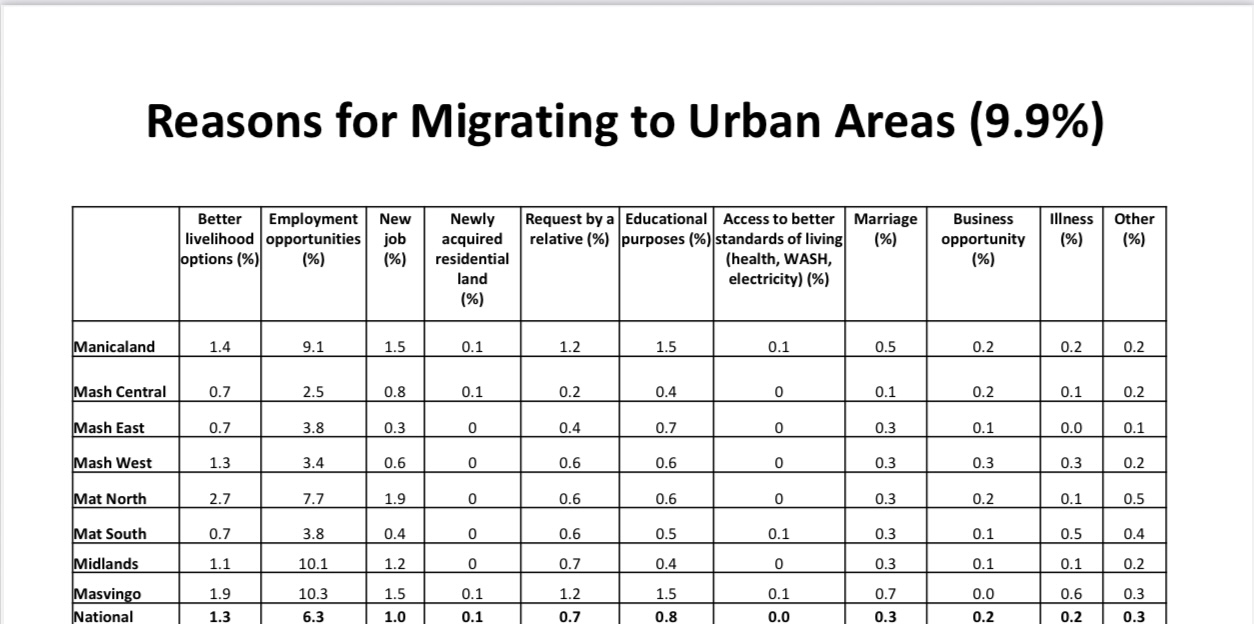BY NOKUTHABA DLAMINK
Matabeleland North has recorded some of the highest levels of migration in Zimbabwe, with 12.6% of households moving to urban areas and 7.8% leaving the country, according to the 2024–2025 Zimbabwe Livelihoods Assessment Committee (ZimLAC) report.
The figures highlight a growing trend in which families are uprooting in search of work, education, and better living conditions, with the province’s migration rate well above the national averages of 9.9% for rural-to-urban moves and 5.0% for emigration.
For many in Matabeleland North, economic necessity drives these decisions.
“I had to send my son to Bulawayo because there was simply no work here,” said Thabani Ncube, a smallholder farmer in Lupane. “Even piece jobs have dried up. At least in town, he can hustle and maybe support the family.”
The ZimLAC report shows that employment opportunities are the leading reason behind rural-to-urban migration nationally (6.3%). In Matabeleland North, 7.7% cited education as the next big pull factor, followed by new residential land and improved living standards.
Experts warn that while migration can bring relief through remittances, it also risks hollowing out rural communities.
“This trend is a double-edged sword,” explained Dr. Nomalanga Sibanda, a livelihoods researcher in Bulawayo. “Families may benefit from remittances, but local economies lose critical labour and skills. Over time, this weakens resilience in rural districts.”
Other Provinces: Contrasting Patterns
Matabeleland South recorded the highest rate of emigration, with 13.5% of households reporting that members had left the country — nearly triple the national average. Masvingo followed closely, with 16.5% moving to towns and 7.7% leaving for the diaspora.
Meanwhile, Mashonaland Central had the lowest levels of outward movement, with just 4.4% moving to towns and 1.0% emigrating.
Midlands also stood out, with 12.9% shifting to urban areas and 6.2% relocating abroad, driven mainly by job opportunities and schooling.
National Picture
Across Zimbabwe, nearly one in ten households (9.9%) reported rural-to-urban migration, while 5% indicated emigration outside the country. Employment, education, and improved living standards remain the strongest motivators.
For ordinary families, the story is about survival and hope.
“My husband left for South Africa last year,” said Memory Dube of Gwanda, Matabeleland South. “He sends money when he can, but life is tough there too. Still, we rely on that income to buy food and pay school fees.”
ZimLAC, which advises the government through the Food and Nutrition Council (FNC), says the data will guide evidence-based interventions. The report stresses that migration trends are not just statistics, but reflect deeper issues of economic opportunity, resilience, and service delivery across provinces.

 Slider3 years ago
Slider3 years ago
 National4 years ago
National4 years ago
 Tourism and Environment4 years ago
Tourism and Environment4 years ago
 Opinion4 years ago
Opinion4 years ago
 Special reports4 years ago
Special reports4 years ago
 National4 years ago
National4 years ago
 National3 years ago
National3 years ago
 National3 years ago
National3 years ago



